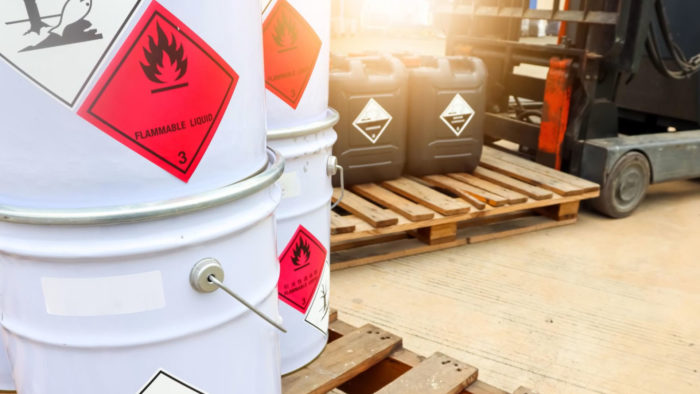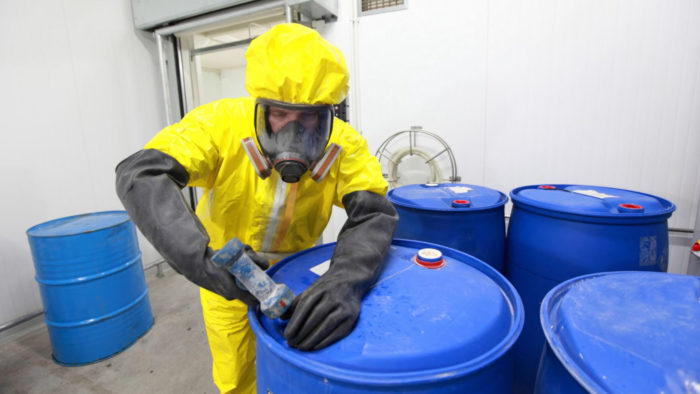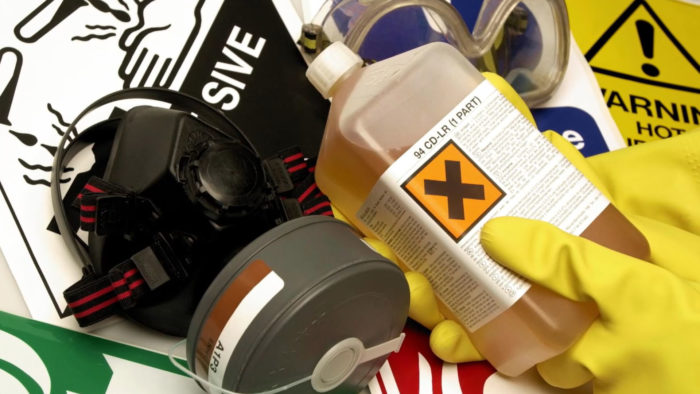In recent years, the transportation of chemical substances has become a critical issue in the logistics industry. These materials are highly hazardous and necessitate special precautions to ensure their safe transportation. In this blog, we will elucidate all the essential aspects of transporting chemical substances that you need to know.
What are hazardous chemical substances and how are they classified?
Hazardous chemical substances are those that can cause harm to human health, the environment, and property if not handled appropriately. These substances can be liquid, solid, or gaseous and are used in a wide range of industries, from agriculture to manufacturing.
The classification of hazardous chemical substances is based on their physical and chemical properties, as well as their effect on human health and the environment. Most hazardous chemical substances are classified into one of the following groups: flammable, explosive, toxic, corrosive, oxidizing, radioactive, or biological.
It is crucial to be aware of the classification of hazardous chemical substances to handle them appropriately and minimize the risks associated with their transportation. In the chemical transportation industry, having the knowledge and skills required to handle such materials safely and efficiently is paramount.

Legal requirements for the transportation of chemical substances worldwide.
The transportation of hazardous chemical substances is a highly regulated and standardized process worldwide. Internationally, several regulations and agreements exist that aim to ensure the safety of transporting these substances and reduce risks to both the environment and public health.
One of the most important regulations in Europe is the European Regulation on Classification, Labeling, and Packaging of Chemical Substances and Mixtures (REACH) and the CLP Regulation on Classification, Labeling, and Packaging. These regulations establish a set of criteria for classifying hazardous chemical substances and define the requirements for their labeling, packaging, and documentation necessary for transportation.
At the global level, the United Nations (UN) has established a set of standards and recommendations known as the Globally Harmonized System of Classification and Labelling of Chemicals (GHS) for the classification and labeling of hazardous chemical substances. The GHS is an international agreement that seeks to ensure clear and unified communication about the hazards associated with these substances and establishes requirements for their safe transportation.
Moreover, the International Convention for Safe Containers (CSC) establishes the requirements for containers used for the transportation of hazardous substances, and the International Convention for the Prevention of Pollution from Ships (MARPOL) sets regulations for preventing pollution from hydrocarbons and other chemical contaminants during maritime transportation.
Indeed, compliance with these regulations and legal requirements is crucial for companies involved in the transportation of hazardous chemicals to ensure safety and protection of the environment and public health.
It is important to keep in mind that the transportation of hazardous chemicals is a highly significant issue and can have severe consequences if not carried out appropriately. In the next section, we will discuss the necessary safety measures for transporting these substances safely.

How to prepare the cargo for the transportation of chemical substances.
When it comes to transporting chemicals, it is essential to take special measures to ensure the safety of the cargo and minimize risks to personnel and the environment. An important part of this preparation is the proper classification and packaging of the chemicals before transport. Below are some essential steps for preparing the cargo safely and efficiently.:
- Identification: The first step is to identify the type of chemical substance that will be transported, its properties, and associated risks. This will allow the cargo to be classified according to international regulations and determine the necessary packaging and labeling requirements..
- Classification and labeling: the cargo must be classified according to the Globally Harmonized System of Classification and Labeling of Chemicals (GHS), which establishes criteria for the identification of hazards and risks. In addition, it must be properly labeled with clear and visible information about the content and associated hazards..
- Packaging: Chemical substances must be packed in suitable, sturdy, and secure containers to prevent leaks or spills during transport. In addition, the packaging must comply with international regulations for the transport of dangerous goods.
- Documentation: it is essential to carry the necessary documents on board, such as the safety data sheet of the chemical substance, which details relevant information about the product, its risks, and the necessary safety measures.
These are just some of the fundamental steps for preparing the shipment of chemical substances for transport. It is important to note that each case is different and requires specialized and personalized attention to ensure the safety of the shipment and compliance with regulations. At XGL, we have experts in the transport of dangerous goods who can provide you with customized advice and solutions for your specific needs.
I apologize if my previous translations were not accurate. Here is a corrected translation:
Documentation: it is essential to carry the necessary documents on board, such as the safety data sheet of the chemical substance, which details relevant information about the product, its risks, and the necessary safety measures.
These are just some of the fundamental steps for preparing the shipment of chemical substances for transport. It is important to note that each case is different and requires specialized and personalized attention to ensure the safety of the shipment and compliance with regulations. At XGL, we have experts in the transport of dangerous goods who can provide you with customized advice and solutions for your specific needs.
Safety measures for the transport of chemical substances:
The transport of chemical substances is an activity that involves risks, both for people and for the environment. For this reason, it is essential to have adequate safety measures in place to minimize these risks.

Security measures for the transportation of chemical substances
Transporting chemical substances is an activity that involves risks, both for people and the environment. For this reason, it is essential to have adequate security measures in place to minimize these risks.
Below are some of the most important security measures that should be taken during the transportation of chemical substances:
- Proper selection of packaging: The container used to transport the chemical substance must be sturdy and suitable for the type of substance being transported. It must comply with legal requirements and be labeled correctly.
- Marking and labeling: All containers containing hazardous chemical substances must be correctly marked and labeled, indicating the name of the substance, its dangerousness, and any other relevant information.
- Compliance with regulations: Companies responsible for the transportation of chemical substances must comply with all applicable local, national, and international regulations.
- Personnel training: It is essential that all personnel involved in the transportation of chemical substances are properly trained and capable of carrying out this task safely.
- Use of personal protective equipment: Personnel responsible for the transportation of chemical substances must use the appropriate personal protective equipment to minimize risks.
- Emergency planning and management: Companies responsible for the transportation of chemical substances must have adequate emergency plans in place in case of accidents or hazardous situations.
These are just some of the most important security measures that should be taken during the transportation of chemical substances. It is essential that companies involved in this activity conduct a risk assessment and establish additional security measures based on the characteristics of the substances being transported and the transportation conditions.
At XGL, we have extensive experience in the transportation of chemical substances and are committed to safety and environmental protection. Contact us for more information about our transportation services.

Safety measures during the transportation of chemical substances
Transporting hazardous chemical substances involves certain risks, so it is important to take appropriate safety measures to minimize hazards and prevent accidents. Some of the safety measures that must be taken include:
- Using appropriate packaging: It is important to use sturdy packaging specifically designed for the transportation of hazardous chemical substances. The packaging must comply with international regulations and be correctly labeled and marked.
- Proper handling: During loading and unloading, it is important to handle chemical substances carefully to avoid accidents. Personnel responsible for handling the cargo must be properly trained and use appropriate personal protective equipment.
- Controls and verifications: Before transportation, checks and verifications must be carried out to ensure that chemical substances are properly packaged, labeled, and marked. During transportation, regular inspections must be carried out to ensure that there are no leaks or damages to the containers.
- Compliance with rules and regulations: It is essential to comply with international rules and regulations for the transportation of hazardous chemical substances. This includes proper classification of substances, selection of safe routes, and obtaining necessary permits and authorizations.